Hello, everyone, welcome to “Inconvenient Truths”. I am your host Jennifer Zeng.
Today I will talk about two topics: How serious China’s debt crisis really is, and the intensifying internal power struggle leading up to the CCP’s 20th National Congress, which will decide the fate of Xi Jinping: whether he can stay for a 3rd term, or will be removed. So make sure you stick around till the end.
YouTube’s Suppression and A Big Thank You to All
Before I move to our first topic today, I’d like to take this opportunity to thank all my donors and supporters.
Yesterday I suddenly found that my Patreon pledge hit a new high this month. This is a picture of the growth. This is my Patreon page where people can make donations to help my efforts. The link to this page is in the description box under this video.
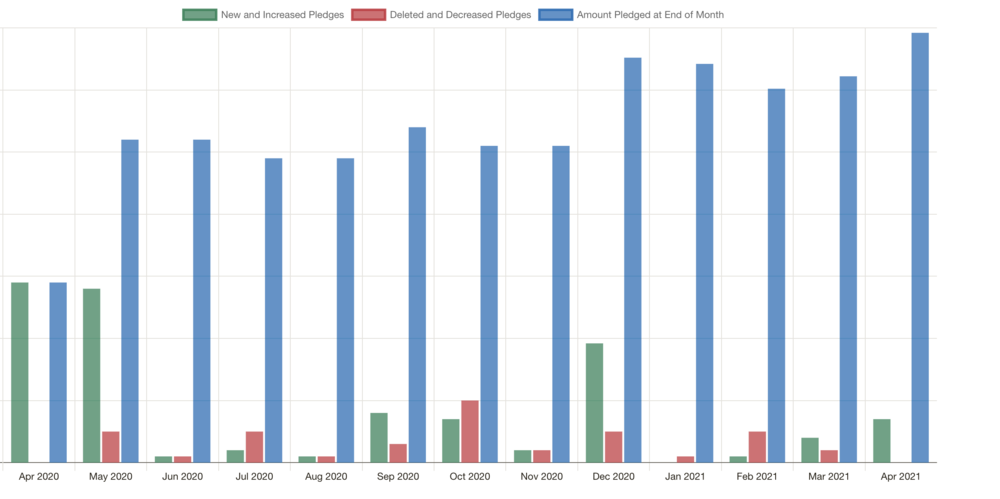
Jenifer’s Patreon pledge growth

Jennifer’s Patreon donation page
I really appreciate all the support I am receiving. I talked about how hard it is to maintain this channel a while ago with YouTube suppressing me, but didn’t get into too many details.
Now, let me show you something.
This is my subscriber history data. You can see that my subscriptions kept growing steadily since I started this channel about one year ago. Then it suddenly dropped instead of growing in January this year. I can tell you the drop happened right after January 6th. I think I don’t need to explain what happened on that day, and why everything changed ever since.
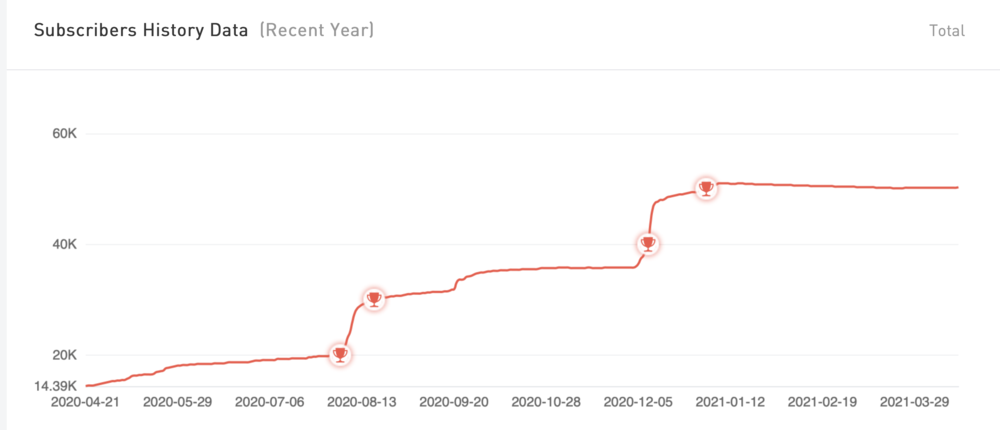
Jennifer’s subscriber history data
Not only the subscriptions, but also the views suddenly dropped dramatically starting Jan. 6th.
Let’s show a picture of two of my most popular shows. You can see I got 315 K views 8 months ago.

Two most popular shows of Jennifer
Now let’s show the data of my last show about the CCP offering its Beidou Navigation Satellite System to Iran, North Korea and 137 “One Belt, One Road” countries. You can see how pitiful the numbers are. I got only 1.4K views, 2 less subscribers and less than $6 revenue for it.
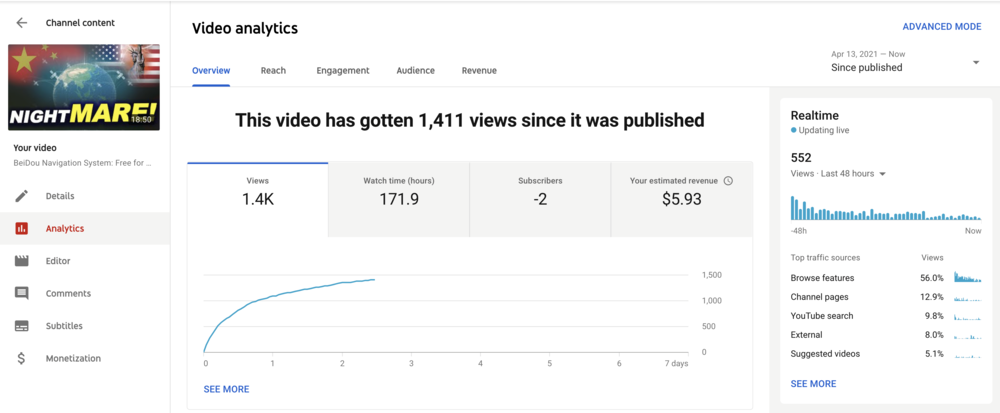
Data of last show at https://youtu.be/48XiNQkCV4o
And how much do I need to spend to produce such a show? I can tell you that I work full time for this channel now. I need 3 days on average to produce one show, as I need to do all the background research, prepare all the materials, and put all the information together.
English is only my second language, it takes me 2-4 times more effort and time to write in English rather than writing in Chinese. Sometimes I struggle to find the correct words to express myself.
Also, as you can see, I am doing live shows from a professional studio, with professional equipment including a professional camera.
When we go live, two technicians are working together with me, right now. One is in charge of casting the signal from the broadcasting system to YouTube, and monitoring everything; another one is in charge of putting up all the correct pictures and videos I prepare at exactly the correct time while I talk.
So all these cost a lot of money, right? That’s why I really appreciate all the support I can have. Otherwise, it IS very hard for me to carry on.
Another most important point to make is, like many of my viewers, I also believe that what I am doing is incredibly important.
I started this channel last April, at the peak of the CCP virus pandemic, to share my first hand information and knowledge about it, as I worried so much about the damage that the pandemic could bring us because of the lack of information and knowledge.
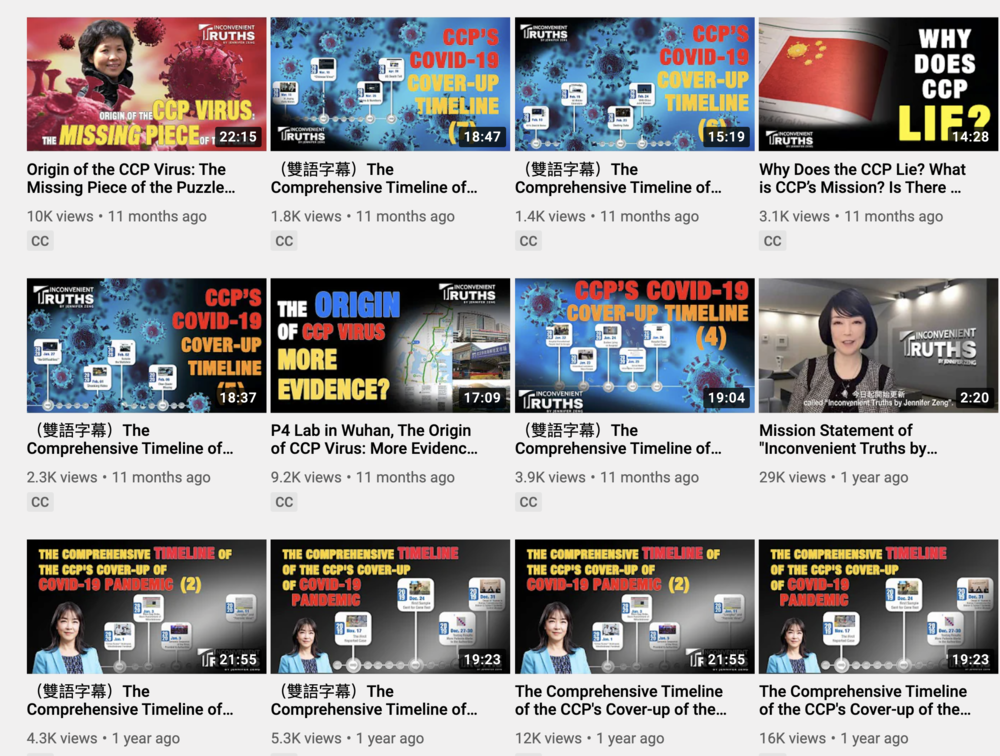
The first batch of shows Jennifer did about 1 year ago.
So the first batch of shows I did was a series of timelines of the CCP’s covering up of the information.
I am very proud to say that while more and more people inside the US government and intelligence community, as well as people from other countries, are starting to say that the virus could come from the lab in Wuhan, I did a show 11 months ago and clearly said the same thing, and once got demonetized by YouTube because of this show.
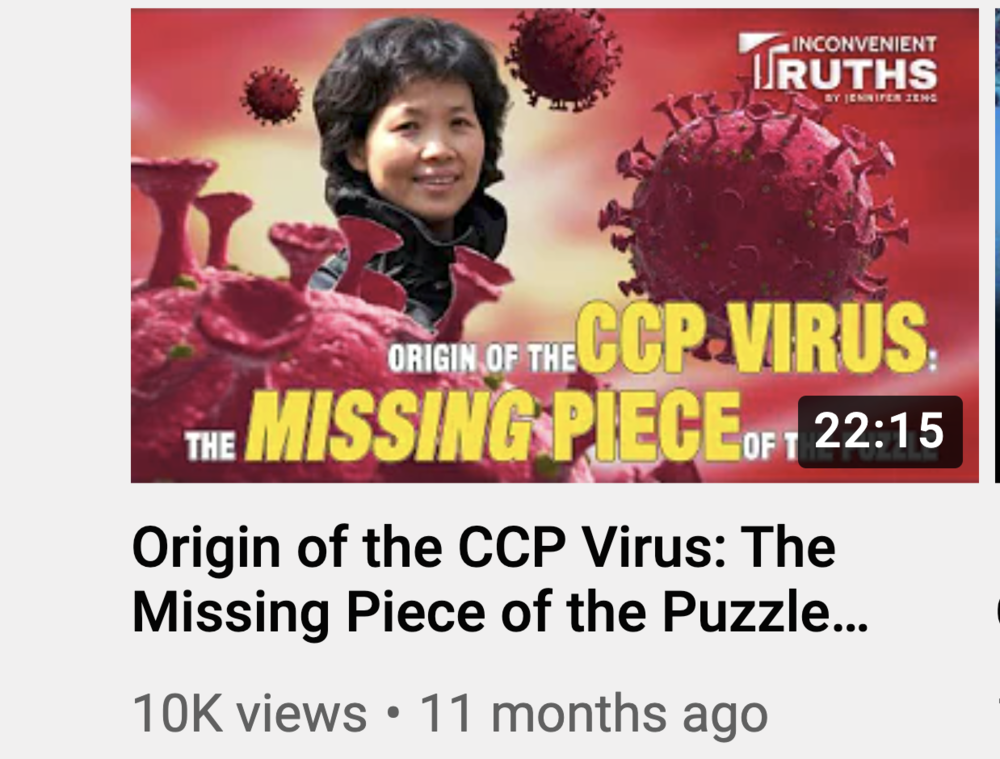
Jenifer’s show: Origin of the CCP Virus: The Missing Piece of the Puzzle
So, the point is, what you are getting from my channel is not something you can get from those so-called mainstream media. Many of them have become propaganda machines like the CCP’s media.
So, again, thank you for your wonderful support and please do continue to support me if you can, so that together, we can spread the truth.
Now, let’s move on to our first topic today.
Deepening Debt Crisis
Recently the State Council of China issued “The Guideline on Enhancing Debt Risk Control of Local State-owned Enterprises“, which says “the risk problem should be solved through comprehensive deepening reform to effectively enhance the capacity of enterprises to fend off risks”.
This once again highlights the debt crisis of China’s state-owned enterprises (SOEs) that has been deepening since 2020.
We all know that when the CCP says we must do well in some area, it means that big problems, or even crises, already exist in that area.
Then how serious is the debt crisis for the CCP’s state-owned enterprises? Let’s check some concrete examples and figures.

Shortly before the guideline was issued, state-owned coal company Jizhong Energy Group missed part of its payments on two bonds; while Chongqing Energy Investment Group, the only local energy platform owned 100 percent by the local government, defaulted on its bank notes.
Only 4 months ago, in November last year, China saw consecutive defaults by a number of SOEs including Henan Yongcheng Coal and Electricity Hold Group, Brilliance Auto and Tsinghua Unigroup .
Another phenomenon to notice is, while during 2018-2019, the default of bonds mainly occurred in private enterprises, in 2020, the SOEs became the main defaulters.
SOEs: A “Shadow Play” under the CCP’s Credit Expansion
The defaults by SOEs not only undermine the credibility of the CCP and the stability of China’s financial system, but also highlights another problem, that is, the SOEs are like the CCP’s “shadow play”.
Have you ever watched a shadow play? A small puppet can become very tall and flashy when it is illuminated by the lights behind it. But that is just false bluffing.

A shadow play
So with the CCP’s SOEs, the expansion of credit has inflated them, but they lack actual strength.
With easy credit, SOEs were able to borrow cheap money from banks to make large investments, which inflated the size of SOEs’ assets. But the profitability of their investments were not high.
In the past 20 years, there have been 4 major credit expansions in China. These expansions stimulated the economy, and were followed by a rapid rise in the size of debt of the entire society.
With access to large amounts of cheap capital, Chinese companies have expanded rapidly, with 124 companies from mainland China (including Hong Kong) making the Fortune 2020 list of the world’s top 500 companies, surpassing the United States for the first time, which had 121 companies on the list.
Chinese companies on the list are mainly SOEs, including 48 central enterprises, and 32 local state-owned companies.
Back in 1997, only four companies from mainland China were on the list.
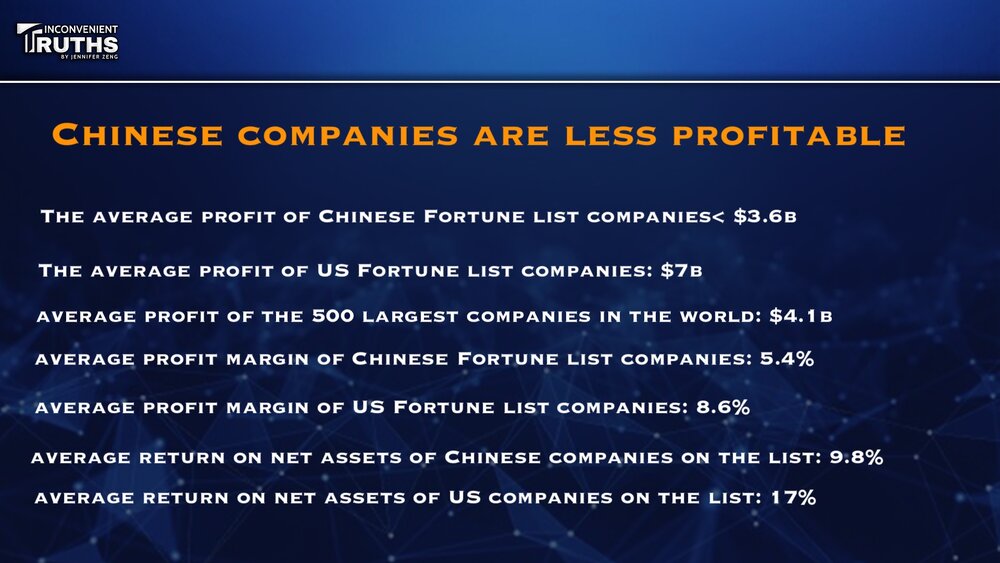
However, Chinese companies are less profitable. The average profit of the 124 mainland Chinese companies on the list is less than $3.6 billion, about half that of U.S. companies, and less than the average profit of $4.1 billion of the 500 largest companies in the world.
In the meantime, the average profit margin of the mainland Chinese companies on the list is 5.4 percent, which is lower than the 8.6 percent of the U.S. companies.
The average return on net assets of the Chinese companies on the list is 9.8 percent, which is also lower than the 17 percent of the US companies.
High Financial Costs and Huge Debt Risk
The debt funded investment with low returns has also brought SOEs huge amounts of debts, high financial costs and huge debt risk.
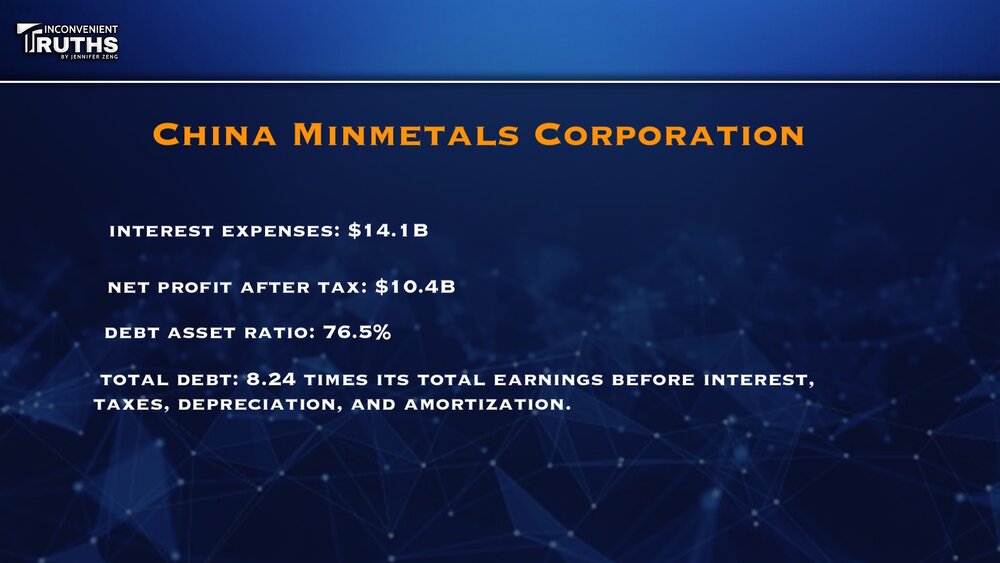
Take China Minmetals Corporation, a Fortune 500 company as an example. In 2019, the company’s interest expenses are as high as $14.1 billion, while its net profit after tax is only $10.4 billion, which is less than its interest expenses.
Its 2019 debt asset ratio is 76.5 percent, and its total debt is 8.24 times its total earnings before interest, taxes, depreciation, and amortization.
This means that it will take more than 8 years for the company to repay its debt through its own operations.
With high leverage, SOEs rely heavily on refinancing to repay their debts, either through bank borrowing or by issuing bonds in the debt market to pay off upcoming maturities.
A big problem is, all major Chinese banks, as well as the SOEs are owned by the CCP, this means that the CCP is both the borrower and the lender when it comes to SOEs bank financing.
To support the SOEs, the CCP often orders the banks to lend money to them.
So this shifts the risk of SOEs onto the banks. If SOEs do not improve their own financial situation and rely only on government support to repay their debts through refinancing, then the SOEs’ debts will snowball and the risk of debt will grow until one day, when the CCP can no longer support these enterprises to repay their debts.
When that day comes, the entire financial system will be at great risk.
How big is the risk?
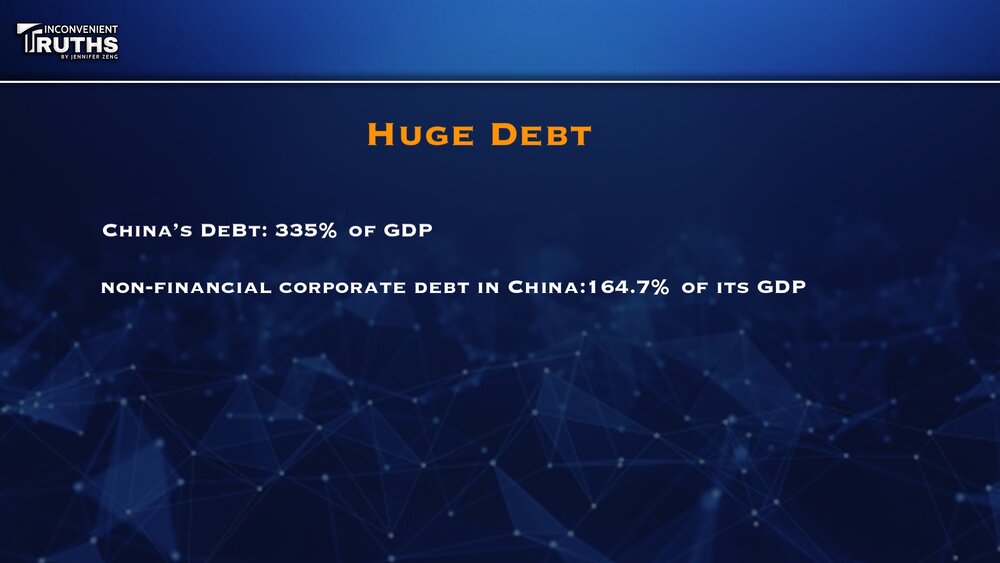
By 2020, China’s debt had reached 335 percent of its GDP, with non-financial corporate debt accounting for 164.7 percent of its GDP, while in the United States, non-financial corporate debt accounts for 81.8 percent of its GDP.
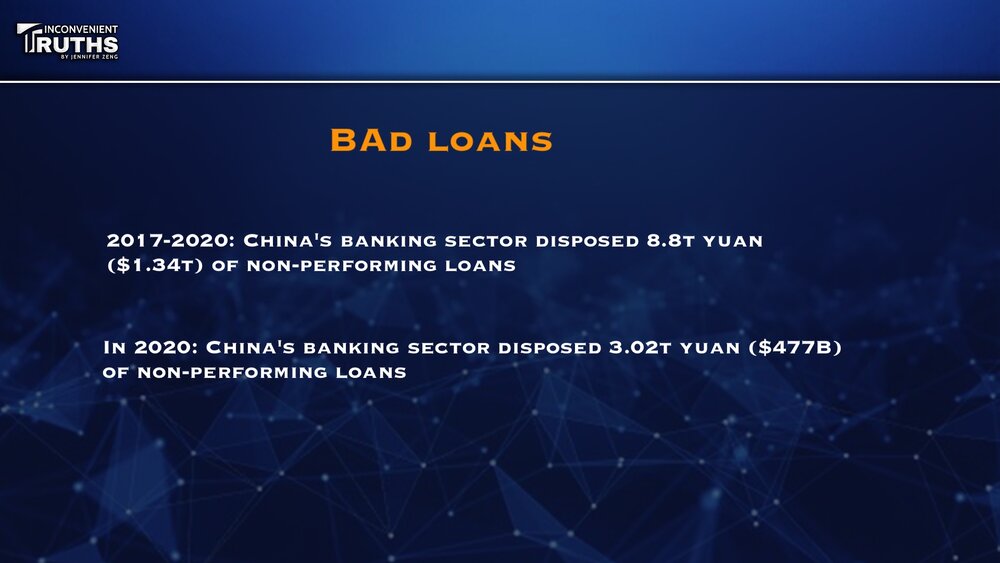
From 2017 to 2020, China’s banking sector had disposed 8.8 trillion yuan ($1.34 trillion) of non-performing loans, more than the sum of the previous 12 years. Among them, in 2020 alone, 3.02 trillion yuan ( $477 billion) bad loans were deposed. Banks needed to replenish their capital to defend against the risk of bad loans.
In the meantime, China’s local government debt is also approaching the alert zone.
In 2020, the explicit debt ratio of local governments reached 97.2 percent, while the ratio may enter the alert zone this year, which is 100%-120%.
I hope you are not feeling bored by these boring numbers. But the problems are real: the bad debts of the banks, as well as the debt pressure of local governments will make it hard for the CCP to bailout the SOEs.
However, if the CCP just sits idly to see the SOEs default, the credibility of the CCP itself will be shattered, which will make it even more difficult to refinance the SOEs that rely on government support.
So that is the problem the CCP is facing now. You may have read the news the CCP just announced that its GDP growth for the first quarter of this year is as high as 18.3%. Even if this number is true, it is still a shadow play falsely enlarged by the light. It is not real.
The Sudden Death of Former Shanghai Mayor Yang Qiong
Now, let’s move to our second topic today, the intensifying power struggle inside the CCP.
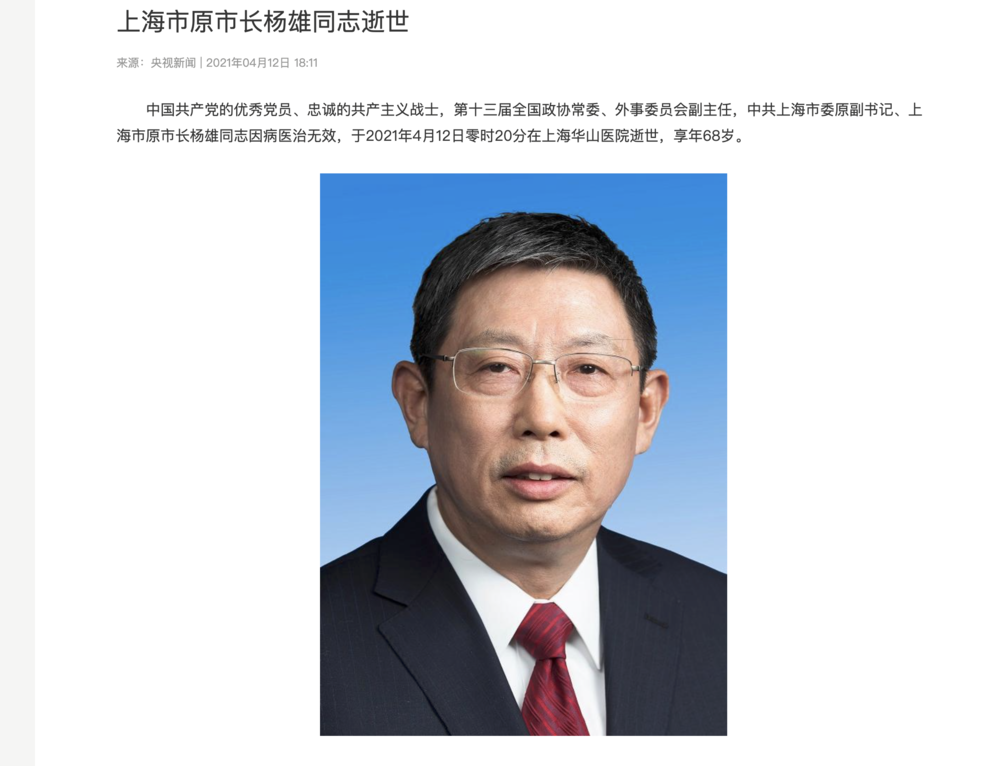
The CCP’s official report about Yang Qiong’s death
A few days ago, on April 12, former mayor of Shanghai City Yang Qiong suddenly died of a heart attack only 2 hours after he was sent to the hospital. And his death has sparked a lot of speculation among Chinese people both inside and outside of China?
Why?
Because Yang Qiong was well known for his tight ties with former CCP head Jiang Zemin’s family, especially with Jiang Zemin’s eldest son Jiang Mianheng.
Many Chinese people called Yang Qiong Jiang Mianheng’s confidant and henchman.
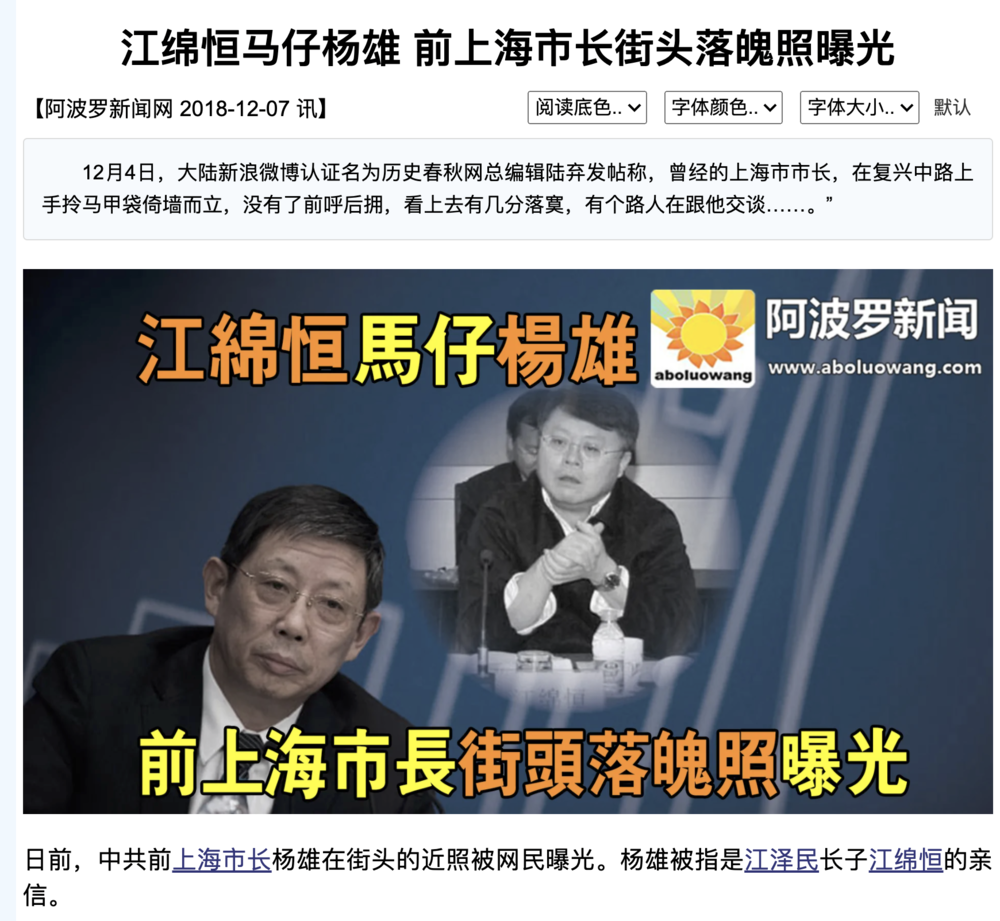
A Chinese language report referring Yang Qiong as Jiang Mianheng’s confidant and henchman.
Yang Xiong was born in 1953 in Hangzhou City, Zhejiang Province, and was only 68 years old this year.
We all know that Jiang Zemin rose to the top of the CCP’s power center from Shanghai City. He was the mayor and CCP secretary of Shanghai before he was promoted to the central government and became the General Secretary of the CCP’s Central Committee in 1989, after the Tiananmen Massacre.
So we can say that Shanghai was Jiang Zemin’s base and territory.
Jiang Zemin’s eldest son Jiang Mianheng also built up his own base and territory in Shanghai based on what his father left for him.
For example, the ShanghaiTech University was founded by Jiang Mianheng, and later became his own kingdom. Yang Qiong was appointed as a member of the school council of this university.
Jiang Mianheng has also been the Vice-President of the Chinese Academy of Sciences, and the president of the Shanghai branch of Chinese Academy of Sciences. Because of the huge amount of research funding he controlled, there has been a lot of corruption involved as to who could get the fund, etc.
Let’s go back to Yang Qiong’s story.
Yang Qiong became the vice mayor of Shanghai city in 2012. However, he failed to become a member, or even an alternate member of the CCP’s Central Committee at the 18th National Congress of the CCP held in that year.
In the following year, 2013, he was promoted to the mayor of Shanghai, as a non-CCP Central Committee member. This had never happened in Shanghai before, and caused a lot of attention.
It was reported later that at that time, Xi Jinping wanted to appoint someone he trusted as Shanghai’s mayor, but Jiang Mianheng stepped in. Because Shanghai was the Jiang family’s territory, Xi Jinping failed to achieve what he wanted.
So we can say that that was the first round of power struggle between Xi Jinping and Jiang’s family surrounding Yang Qiong.
Then in 2016, Yang Xiong was “given a talk” by the CCP’s Central Commission for Discipline Inspection, which means he was under investigation. He was then required to criticize himself at a CCP meeting at the Shanghai Committee.
After Xi Jinping came to power in 2012, he began an anti-corruption campaign mainly via the Discipline Inspection system, and purged a lot of senior officials. Most of them belonged to Jiang’s camp.
In 2017, Yang Xiong stepped down as Shanghai’s mayor, and later became the deputy chairman of the Finance and Economy Committee of the National People’s Congress of China.
This was the worst treatment for a Shanghai mayor in 26 years. Unlike his predecessors, he was the first one who did not receive the treatment of a vice national level official.
All previous mayors of Shanghai, were at least at the vice-national level in terms of their bureaucrat ranking.
There was another very abnormal thing related to Yang Qiong.
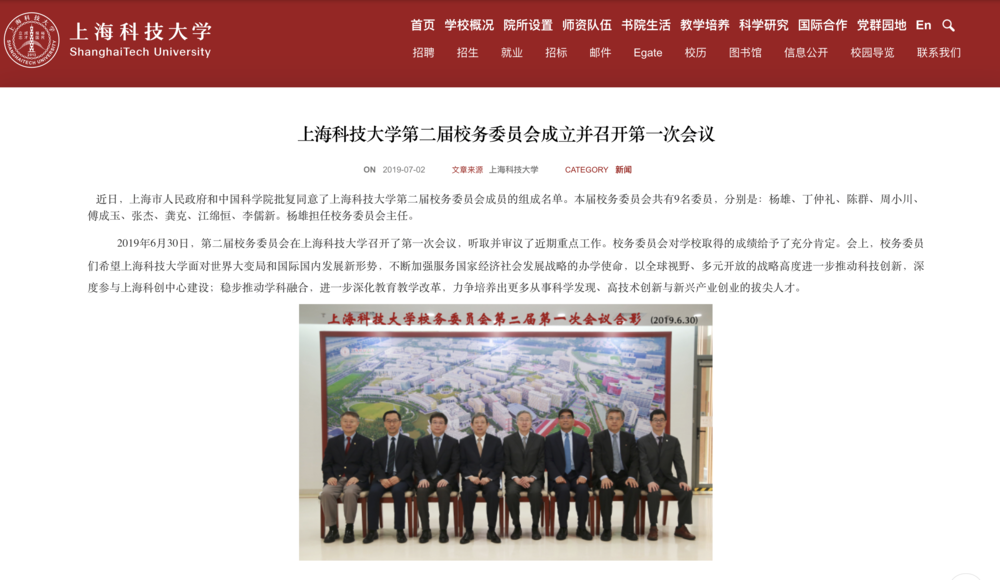
Report of ShanghaiTech University’s website and group photo with Yang Qiong sitting in the middle.
On June 30, 2019, the Second school council of the ShanghaiTech University was established and held its first meeting. Both Jiang Mianheng and Yang Qiong were members of the council.
Other members include Ding Zhongli, Vice Chairman of the National People’s Congress Standing Committee, and Zhou Xiaochuan, Vice Chairman of the 12th National Committee of the Chinese People’s Political Consultative Conference (CPPCC). Both of them are at the vice national level in terms of their positions in the CCP’s political system.
In the meantime, Yang Qiong was only a provincial level official.
A group photo of the council members on the website of ShanghaiTech University shows that Yang Qiong was sitting in the middle, while Ding Zhongli and Zhou Xiaochuan, who have higher official ranks, sat at his left and right side.
This immediately raised some eyebrows, as in CCP’s China, the official hierarchy is very strict, and the seating orders are very important and always carefully arranged. The most important person is always situated in the middle in group photos.
Therefore, it was very unusual that Yang was in the middle instead of the two higher ranking officials.
So it was believed that Yang’s failure to ascend to the CCP’s Central Committee as the mayor of Shanghai was related to Xi Jinping’s suppression of Jiang Zemin’s family.
Meanwhile, Jiang Mianheng fought back by having Yang sit in the middle of that group photo.
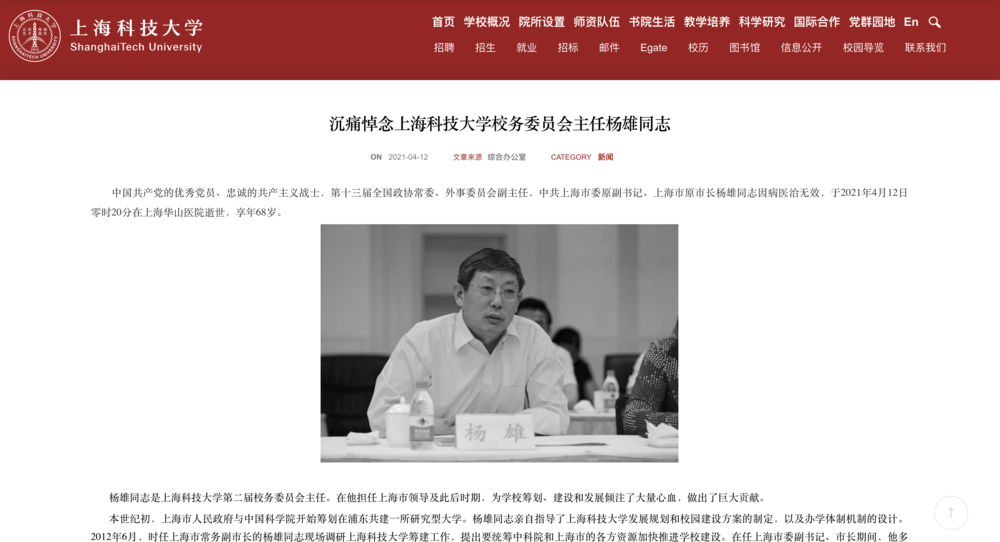
On the same day of Yang’s death, ShanghaiTech University published an article, titled, “Sorrowful Tribute to the Memory of Comrade Yang Xiong, Director of the School Council of ShanghaiTech University.”
On the same day of Yang’s death, ShanghaiTech University published an article, titled, “Sorrowful Tribute to the Memory of Comrade Yang Xiong, Director of the School Council of ShanghaiTech University.”
The article speaks highly of Yang’s contributions to the university, and it mentioned that Yang had visited the school many times when he was the mayor and the deputy CCP secretary of Shanghai.
This high profile tribute of the ShanghaiTech University once again shows the deep ties between Yang and Jiang Mianheng.
Another thing people noticed was that many high ranking CCP officials have long lifespans as they have the privilege of receiving the best medical care. Many of them have lived more than 90 years, and there are also many senior officials who are still in office at the age of 68.
So, the very sudden death of Yang, a senior official at the ministerial level who also enjoyed medical care privileges, has drawn some public speculation.
As late as April 7, five days before Yang’s death, Lu Yachen, former vice president of Shanghai Electric Group, who had hidden ties with Jiang Zemin’s family, was placed under investigation.
Although we don’t know whether these two incidents are related to each other or not, but there is no doubt that Jiang Zemin’s family and his political faction are under pressure as Xi Jinping could be ramping up his anti-corruption campaign among officials ahead of the CCP’s 20th National Congress, which will be held in the autumn of next year. It is widely believed that Xi will be seeking a third term, something unprecedented in recent history, at the 20th National Congress.
So what will happen next? We have to wait and see.
Well, that’s all for today’s Inconvenient Truths. Thank you very much for watching.
Again, thank you very much for your support too. See you next time!
4/16/2021
Truth Saves Lives. Subscribe and support! 真相能救命。請支持!
Donate to me directly 直接捐款:https://donorbox.org/inconvenient-truths-by-jennifer-zeng
Subscribestar 會員頻道: https://bit.ly/3fEzeJB
YouTube 油管:bit.ly/3b87DPj
GoFundme 衆籌:https://bit.ly/2zx6LVw
Patreon 網站:https://bit.ly/3cvBy3H
Paypal 捐款:http://paypal.me/JenniferZeng97
Bitcoin 捐款:bc1qlkkvwyvw96x3xx6jgzkhlnnv0nv3d9vm078vfd

The CCP’s Debt Crisis and the Intensifying Power Struggle Leading up to the 20th National Congress
Hello, everyone, welcome to “Inconvenient Truths”. I am your host Jennifer Zeng.
Today I will talk about two topics: How serious China’s debt crisis really is, and the intensifying internal power struggle leading up to the CCP’s 20th National Congress, which will decide the fate of Xi Jinping: whether he can stay for a 3rd term, or will be removed. So make sure you stick around till the end.
YouTube’s Suppression and A Big Thank You to All
Before I move to our first topic today, I’d like to take this opportunity to thank all my donors and supporters.
Yesterday I suddenly found that my Patreon pledge hit a new high this month. This is a picture of the growth. This is my Patreon page where people can make donations to help my efforts. The link to this page is in the description box under this video.
Jenifer’s Patreon pledge growth
Jennifer’s Patreon donation page
I really appreciate all the support I am receiving. I talked about how hard it is to maintain this channel a while ago with YouTube suppressing me, but didn’t get into too many details.
Now, let me show you something.
This is my subscriber history data. You can see that my subscriptions kept growing steadily since I started this channel about one year ago. Then it suddenly dropped instead of growing in January this year. I can tell you the drop happened right after January 6th. I think I don’t need to explain what happened on that day, and why everything changed ever since.
Jennifer’s subscriber history data
Not only the subscriptions, but also the views suddenly dropped dramatically starting Jan. 6th.
Let’s show a picture of two of my most popular shows. You can see I got 315 K views 8 months ago.
Two most popular shows of Jennifer
Now let’s show the data of my last show about the CCP offering its Beidou Navigation Satellite System to Iran, North Korea and 137 “One Belt, One Road” countries. You can see how pitiful the numbers are. I got only 1.4K views, 2 less subscribers and less than $6 revenue for it.
Data of last show at https://youtu.be/48XiNQkCV4o
And how much do I need to spend to produce such a show? I can tell you that I work full time for this channel now. I need 3 days on average to produce one show, as I need to do all the background research, prepare all the materials, and put all the information together.
English is only my second language, it takes me 2-4 times more effort and time to write in English rather than writing in Chinese. Sometimes I struggle to find the correct words to express myself.
Also, as you can see, I am doing live shows from a professional studio, with professional equipment including a professional camera.
When we go live, two technicians are working together with me, right now. One is in charge of casting the signal from the broadcasting system to YouTube, and monitoring everything; another one is in charge of putting up all the correct pictures and videos I prepare at exactly the correct time while I talk.
So all these cost a lot of money, right? That’s why I really appreciate all the support I can have. Otherwise, it IS very hard for me to carry on.
Another most important point to make is, like many of my viewers, I also believe that what I am doing is incredibly important.
I started this channel last April, at the peak of the CCP virus pandemic, to share my first hand information and knowledge about it, as I worried so much about the damage that the pandemic could bring us because of the lack of information and knowledge.
The first batch of shows Jennifer did about 1 year ago.
So the first batch of shows I did was a series of timelines of the CCP’s covering up of the information.
I am very proud to say that while more and more people inside the US government and intelligence community, as well as people from other countries, are starting to say that the virus could come from the lab in Wuhan, I did a show 11 months ago and clearly said the same thing, and once got demonetized by YouTube because of this show.
Jenifer’s show: Origin of the CCP Virus: The Missing Piece of the Puzzle
So, the point is, what you are getting from my channel is not something you can get from those so-called mainstream media. Many of them have become propaganda machines like the CCP’s media.
So, again, thank you for your wonderful support and please do continue to support me if you can, so that together, we can spread the truth.
Now, let’s move on to our first topic today.
Deepening Debt Crisis
Recently the State Council of China issued “The Guideline on Enhancing Debt Risk Control of Local State-owned Enterprises“, which says “the risk problem should be solved through comprehensive deepening reform to effectively enhance the capacity of enterprises to fend off risks”.
This once again highlights the debt crisis of China’s state-owned enterprises (SOEs) that has been deepening since 2020.
We all know that when the CCP says we must do well in some area, it means that big problems, or even crises, already exist in that area.
Then how serious is the debt crisis for the CCP’s state-owned enterprises? Let’s check some concrete examples and figures.
Shortly before the guideline was issued, state-owned coal company Jizhong Energy Group missed part of its payments on two bonds; while Chongqing Energy Investment Group, the only local energy platform owned 100 percent by the local government, defaulted on its bank notes.
Only 4 months ago, in November last year, China saw consecutive defaults by a number of SOEs including Henan Yongcheng Coal and Electricity Hold Group, Brilliance Auto and Tsinghua Unigroup .
Another phenomenon to notice is, while during 2018-2019, the default of bonds mainly occurred in private enterprises, in 2020, the SOEs became the main defaulters.
SOEs: A “Shadow Play” under the CCP’s Credit Expansion
The defaults by SOEs not only undermine the credibility of the CCP and the stability of China’s financial system, but also highlights another problem, that is, the SOEs are like the CCP’s “shadow play”.
Have you ever watched a shadow play? A small puppet can become very tall and flashy when it is illuminated by the lights behind it. But that is just false bluffing.
A shadow play
So with the CCP’s SOEs, the expansion of credit has inflated them, but they lack actual strength.
With easy credit, SOEs were able to borrow cheap money from banks to make large investments, which inflated the size of SOEs’ assets. But the profitability of their investments were not high.
In the past 20 years, there have been 4 major credit expansions in China. These expansions stimulated the economy, and were followed by a rapid rise in the size of debt of the entire society.
With access to large amounts of cheap capital, Chinese companies have expanded rapidly, with 124 companies from mainland China (including Hong Kong) making the Fortune 2020 list of the world’s top 500 companies, surpassing the United States for the first time, which had 121 companies on the list.
Chinese companies on the list are mainly SOEs, including 48 central enterprises, and 32 local state-owned companies.
Back in 1997, only four companies from mainland China were on the list.
However, Chinese companies are less profitable. The average profit of the 124 mainland Chinese companies on the list is less than $3.6 billion, about half that of U.S. companies, and less than the average profit of $4.1 billion of the 500 largest companies in the world.
In the meantime, the average profit margin of the mainland Chinese companies on the list is 5.4 percent, which is lower than the 8.6 percent of the U.S. companies.
The average return on net assets of the Chinese companies on the list is 9.8 percent, which is also lower than the 17 percent of the US companies.
High Financial Costs and Huge Debt Risk
The debt funded investment with low returns has also brought SOEs huge amounts of debts, high financial costs and huge debt risk.
Take China Minmetals Corporation, a Fortune 500 company as an example. In 2019, the company’s interest expenses are as high as $14.1 billion, while its net profit after tax is only $10.4 billion, which is less than its interest expenses.
Its 2019 debt asset ratio is 76.5 percent, and its total debt is 8.24 times its total earnings before interest, taxes, depreciation, and amortization.
This means that it will take more than 8 years for the company to repay its debt through its own operations.
With high leverage, SOEs rely heavily on refinancing to repay their debts, either through bank borrowing or by issuing bonds in the debt market to pay off upcoming maturities.
A big problem is, all major Chinese banks, as well as the SOEs are owned by the CCP, this means that the CCP is both the borrower and the lender when it comes to SOEs bank financing.
To support the SOEs, the CCP often orders the banks to lend money to them.
So this shifts the risk of SOEs onto the banks. If SOEs do not improve their own financial situation and rely only on government support to repay their debts through refinancing, then the SOEs’ debts will snowball and the risk of debt will grow until one day, when the CCP can no longer support these enterprises to repay their debts.
When that day comes, the entire financial system will be at great risk.
How big is the risk?
By 2020, China’s debt had reached 335 percent of its GDP, with non-financial corporate debt accounting for 164.7 percent of its GDP, while in the United States, non-financial corporate debt accounts for 81.8 percent of its GDP.
From 2017 to 2020, China’s banking sector had disposed 8.8 trillion yuan ($1.34 trillion) of non-performing loans, more than the sum of the previous 12 years. Among them, in 2020 alone, 3.02 trillion yuan ( $477 billion) bad loans were deposed. Banks needed to replenish their capital to defend against the risk of bad loans.
In the meantime, China’s local government debt is also approaching the alert zone.
In 2020, the explicit debt ratio of local governments reached 97.2 percent, while the ratio may enter the alert zone this year, which is 100%-120%.
I hope you are not feeling bored by these boring numbers. But the problems are real: the bad debts of the banks, as well as the debt pressure of local governments will make it hard for the CCP to bailout the SOEs.
However, if the CCP just sits idly to see the SOEs default, the credibility of the CCP itself will be shattered, which will make it even more difficult to refinance the SOEs that rely on government support.
So that is the problem the CCP is facing now. You may have read the news the CCP just announced that its GDP growth for the first quarter of this year is as high as 18.3%. Even if this number is true, it is still a shadow play falsely enlarged by the light. It is not real.
The Sudden Death of Former Shanghai Mayor Yang Qiong
Now, let’s move to our second topic today, the intensifying power struggle inside the CCP.
The CCP’s official report about Yang Qiong’s death
A few days ago, on April 12, former mayor of Shanghai City Yang Qiong suddenly died of a heart attack only 2 hours after he was sent to the hospital. And his death has sparked a lot of speculation among Chinese people both inside and outside of China?
Why?
Because Yang Qiong was well known for his tight ties with former CCP head Jiang Zemin’s family, especially with Jiang Zemin’s eldest son Jiang Mianheng.
Many Chinese people called Yang Qiong Jiang Mianheng’s confidant and henchman.
A Chinese language report referring Yang Qiong as Jiang Mianheng’s confidant and henchman.
Yang Xiong was born in 1953 in Hangzhou City, Zhejiang Province, and was only 68 years old this year.
We all know that Jiang Zemin rose to the top of the CCP’s power center from Shanghai City. He was the mayor and CCP secretary of Shanghai before he was promoted to the central government and became the General Secretary of the CCP’s Central Committee in 1989, after the Tiananmen Massacre.
So we can say that Shanghai was Jiang Zemin’s base and territory.
Jiang Zemin’s eldest son Jiang Mianheng also built up his own base and territory in Shanghai based on what his father left for him.
For example, the ShanghaiTech University was founded by Jiang Mianheng, and later became his own kingdom. Yang Qiong was appointed as a member of the school council of this university.
Jiang Mianheng has also been the Vice-President of the Chinese Academy of Sciences, and the president of the Shanghai branch of Chinese Academy of Sciences. Because of the huge amount of research funding he controlled, there has been a lot of corruption involved as to who could get the fund, etc.
Let’s go back to Yang Qiong’s story.
Yang Qiong became the vice mayor of Shanghai city in 2012. However, he failed to become a member, or even an alternate member of the CCP’s Central Committee at the 18th National Congress of the CCP held in that year.
In the following year, 2013, he was promoted to the mayor of Shanghai, as a non-CCP Central Committee member. This had never happened in Shanghai before, and caused a lot of attention.
It was reported later that at that time, Xi Jinping wanted to appoint someone he trusted as Shanghai’s mayor, but Jiang Mianheng stepped in. Because Shanghai was the Jiang family’s territory, Xi Jinping failed to achieve what he wanted.
So we can say that that was the first round of power struggle between Xi Jinping and Jiang’s family surrounding Yang Qiong.
Then in 2016, Yang Xiong was “given a talk” by the CCP’s Central Commission for Discipline Inspection, which means he was under investigation. He was then required to criticize himself at a CCP meeting at the Shanghai Committee.
After Xi Jinping came to power in 2012, he began an anti-corruption campaign mainly via the Discipline Inspection system, and purged a lot of senior officials. Most of them belonged to Jiang’s camp.
In 2017, Yang Xiong stepped down as Shanghai’s mayor, and later became the deputy chairman of the Finance and Economy Committee of the National People’s Congress of China.
This was the worst treatment for a Shanghai mayor in 26 years. Unlike his predecessors, he was the first one who did not receive the treatment of a vice national level official.
All previous mayors of Shanghai, were at least at the vice-national level in terms of their bureaucrat ranking.
There was another very abnormal thing related to Yang Qiong.
Report of ShanghaiTech University’s website and group photo with Yang Qiong sitting in the middle.
On June 30, 2019, the Second school council of the ShanghaiTech University was established and held its first meeting. Both Jiang Mianheng and Yang Qiong were members of the council.
Other members include Ding Zhongli, Vice Chairman of the National People’s Congress Standing Committee, and Zhou Xiaochuan, Vice Chairman of the 12th National Committee of the Chinese People’s Political Consultative Conference (CPPCC). Both of them are at the vice national level in terms of their positions in the CCP’s political system.
In the meantime, Yang Qiong was only a provincial level official.
A group photo of the council members on the website of ShanghaiTech University shows that Yang Qiong was sitting in the middle, while Ding Zhongli and Zhou Xiaochuan, who have higher official ranks, sat at his left and right side.
This immediately raised some eyebrows, as in CCP’s China, the official hierarchy is very strict, and the seating orders are very important and always carefully arranged. The most important person is always situated in the middle in group photos.
Therefore, it was very unusual that Yang was in the middle instead of the two higher ranking officials.
So it was believed that Yang’s failure to ascend to the CCP’s Central Committee as the mayor of Shanghai was related to Xi Jinping’s suppression of Jiang Zemin’s family.
Meanwhile, Jiang Mianheng fought back by having Yang sit in the middle of that group photo.
On the same day of Yang’s death, ShanghaiTech University published an article, titled, “Sorrowful Tribute to the Memory of Comrade Yang Xiong, Director of the School Council of ShanghaiTech University.”
On the same day of Yang’s death, ShanghaiTech University published an article, titled, “Sorrowful Tribute to the Memory of Comrade Yang Xiong, Director of the School Council of ShanghaiTech University.”
The article speaks highly of Yang’s contributions to the university, and it mentioned that Yang had visited the school many times when he was the mayor and the deputy CCP secretary of Shanghai.
This high profile tribute of the ShanghaiTech University once again shows the deep ties between Yang and Jiang Mianheng.
Another thing people noticed was that many high ranking CCP officials have long lifespans as they have the privilege of receiving the best medical care. Many of them have lived more than 90 years, and there are also many senior officials who are still in office at the age of 68.
So, the very sudden death of Yang, a senior official at the ministerial level who also enjoyed medical care privileges, has drawn some public speculation.
As late as April 7, five days before Yang’s death, Lu Yachen, former vice president of Shanghai Electric Group, who had hidden ties with Jiang Zemin’s family, was placed under investigation.
Although we don’t know whether these two incidents are related to each other or not, but there is no doubt that Jiang Zemin’s family and his political faction are under pressure as Xi Jinping could be ramping up his anti-corruption campaign among officials ahead of the CCP’s 20th National Congress, which will be held in the autumn of next year. It is widely believed that Xi will be seeking a third term, something unprecedented in recent history, at the 20th National Congress.
So what will happen next? We have to wait and see.
Well, that’s all for today’s Inconvenient Truths. Thank you very much for watching.
Again, thank you very much for your support too. See you next time!
4/16/2021
Truth Saves Lives. Subscribe and support! 真相能救命。請支持!
Donate to me directly 直接捐款:https://donorbox.org/inconvenient-truths-by-jennifer-zeng
Subscribestar 會員頻道: https://bit.ly/3fEzeJB
YouTube 油管:bit.ly/3b87DPj
GoFundme 衆籌:https://bit.ly/2zx6LVw
Patreon 網站:https://bit.ly/3cvBy3H
Paypal 捐款:http://paypal.me/JenniferZeng97
Bitcoin 捐款:bc1qlkkvwyvw96x3xx6jgzkhlnnv0nv3d9vm078vfd